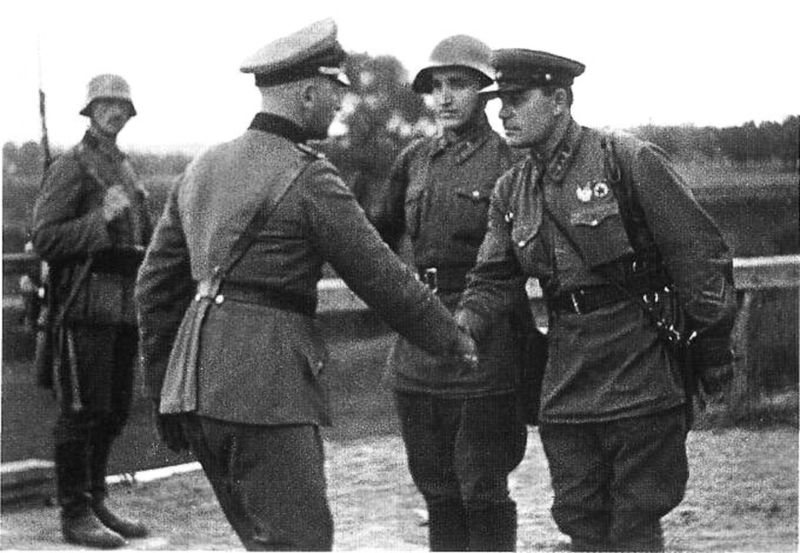
“Despite Lafayette’s epic contributions to American history, few in the United States seem to even remember him.”
By Donald Miller
HE MADE CIVIL disobedience cool long before Mahatma Gandhi, Martin Luther King Jr. or Nelson Mandela. Gilbert du Motier, aka the Marquis du Lafayette, (1757-1834) fought to free America from the British crown and later helped liberate France from the Bourbon monarchy. He was friends with George Washington, an enemy of Robespierre and even stood up to Napoleon Bonaparte. Although fabulously wealthy, he was a long-time champion of the downtrodden and an opponent of slavery. Yet despite his epic contributions to American history, few in the United States seem to even remember him today. Here are nine amazing facts you may not have know about Lafayette.

He was raised in the lap of luxury
Lafayette began life as an unlikely revolutionary. A multi-millionaire at the age of 11, he grew up in the court at Versailles and learned to ride with three future kings: Louis XVI, Louis XVIII and Charles X. Lafayette even met King George III while visiting a relative who was French ambassador to Great Britain.

He was a rebel with a cause
Married at 16, the dashing young officer cadet was captivated by the news of the growing rebellion in America. Unwilling to wait for his country to join the widening war in the New World, Lafayette travelled there himself to fight as a volunteer.

Lafayette claimed he bought the vessel that was to carry him to the New World, La Victoire, but new facts disprove this. Despite orders from King Louis to remain in France, he set sail in 1777 on the ship with a hold full of cannons for the Continental Army.

He made general while still a teenager
Lafayette had never set foot on a battlefield before sailing to America. Weeks before his 20th birthday, he presented himself to George Washington and volunteered to serve the rebellion without pay. He was made a major general and within days was leading troops at the Battle of Brandywine. He later commanded Continental troops in Virginia and bottled up Lord Cornwallis at Yorktown while awaiting Washington and Rochambeau.

He hoped to end slavery in America
Lafayette became like a son to Washington. Despite their close relationship, the young Frenchman was unable to persuade America’s future first president to allow slaves to earn their freedom. He did however end up creating a refuge for 120 blacks in torrid French Guiana.

He fought for revolution at home
Back in France, Lafayette became the founder of the Paris National Guard. He opposed absolutism and championed the concept of a constitutional monarchy. At 32, he wrote the 1789 Declaration of the Rights of Man, which, for the first time, spelled out freedoms for French citizens. He also campaigned to include persecuted Protestants and Jews into civic life.

He faced the guillotine
Despite his egalitarian zeal, Lafayette was no radical. He was elected four times as a liberal member of the French National Assembly. Once in office, he railed against the militants that unleashed the Reign of Terror. Denounced as a traitor by Robespierre, the 35-year-old general was forced to flee the country in 1792. Arrested and imprisoned by the Austrians, Lafayette languished in jail for five years.

He was courted by Napoleon
He was no friend of Napoleon. Although the young Bonaparte negotiated for Lafayette’s release from Austria in hopes of enlisting the noted statesman’s political support none was forthcoming. Lafayette soon became a political opponent of the French first-consul-turned-emperor. After escaping exile on Elba in 1814, Napoleon called on Lafayette to serve as one of his generals. The 57-year-old refused.

He returned to America
In 1824, President James Monroe invited Lafayette to return to the United States as an honoured guest. As the last surviving general of the American Revolution, the aging hero visited all 24 states during his triumphal tour of the U.S. Lafayette was hailed everywhere.

His legacy has been largely forgotten
Lafayette was the first foreigner to address both houses of Congress in 1825. His portrait has hung in the House of Representatives ever since. He was made an honorary American citizen, and some 600 places across the U.S. reference his name or that of La Grange, his turreted chateau 30 miles southeast of Paris. Yet today, few people even know who Lafayette was. He deserves better.
(Originally published on MilitaryHistoryNow.com on Nov 30, 2015)
 About Donald Miller
About Donald Miller
Donald Miller, a Pittsburgh native, earned his bachelors and masters degrees in art history at the University of Pittsburgh. He wrote for the Pittsburgh Post-Gazette for 43 years, retiring as a senior editor. He currently writes for the Naples Daily News and freelances for other publications. He lives in Naples, Florida, with his wife, artist Bette W. Miller. Lafayette: His Extraordinary Life and Legacy is his seventh published book and is available on Amazon, Barnes & Noble and iUniverse online bookstores.










1 thought on “Lafayette – Nine Key Facts About the French Aristocrat Who Became an American Revolutionary”